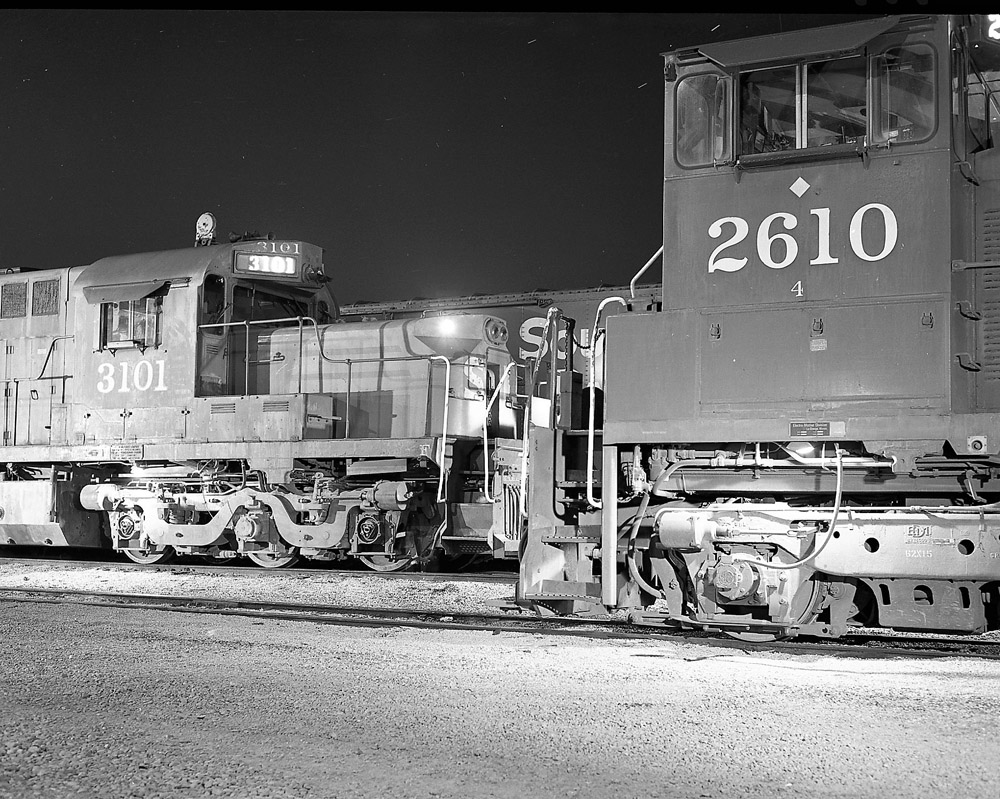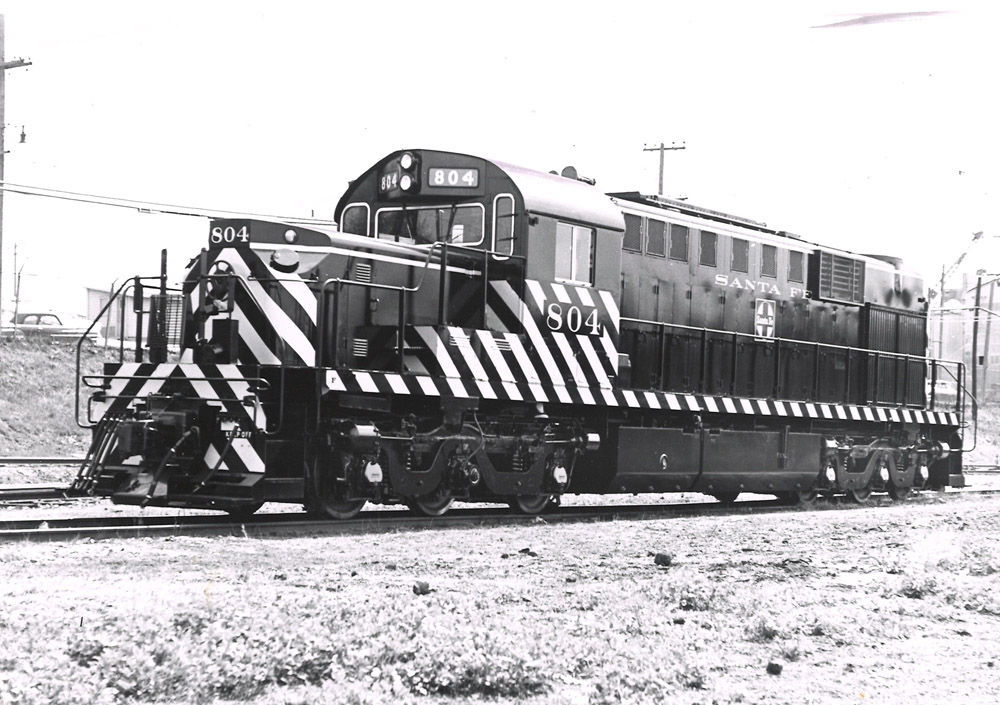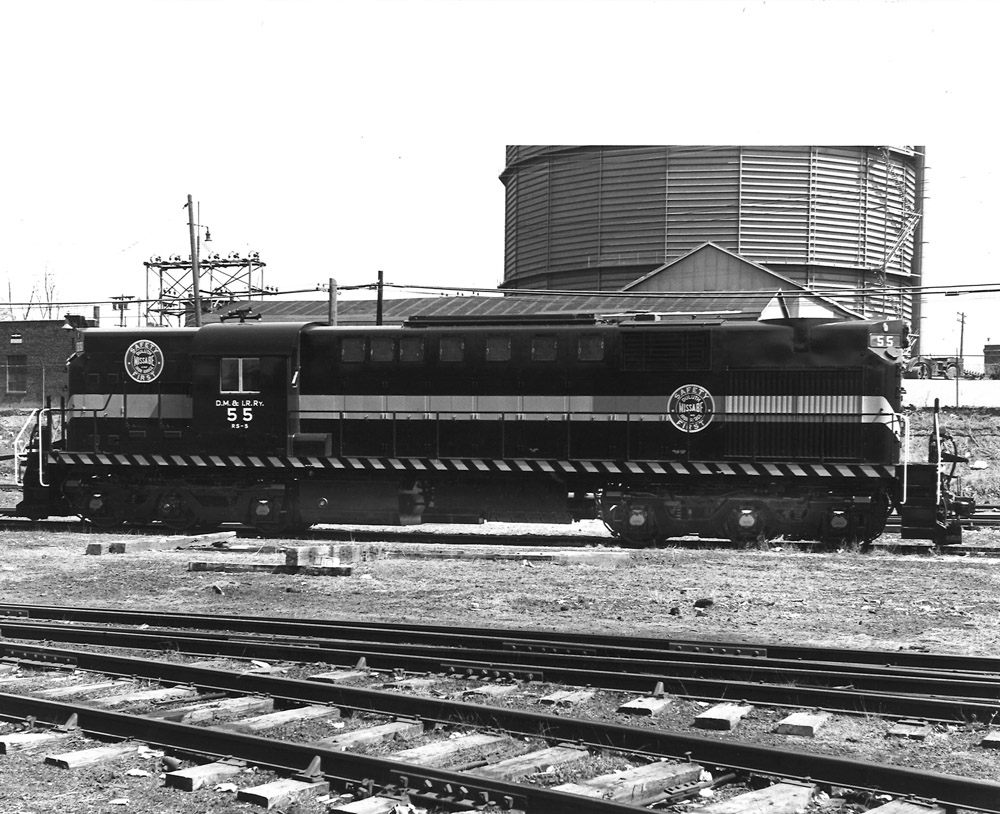Alco RSD15 road switcher

Some locomotive models seem to come and go and hardly get noticed. Nobody can say that about the Alco RSD15.
The six-axle mainline road switcher concept was still in its infancy in the mid-1950s, with many railroads sticking with various four-axle locomotive designs that had been popular for decades. But a precious few railroads were willing to take a look at putting C-C-trucked units on trains that needed the extra tractive effort.
Introduced in 1956 – its competition was the EMD’s SD24 – the six-axle 2,400-hp RSD15 was equipped with the company’s latest 251 prime mover. A vast improvement over the company’s previous 244 line, the new prime mover promised better performance and, most importantly, better reliability.
A new nickname

Originally introduced in traditional high short-nose form – the normal configuration at the time – it was eventually offered with a low-nose for better forward visibility. Nicknamed Alligators, one look at that cut-down short hood explained it all. Seventy-five came out of the company’s Schenectady, N.Y., shops over a four-year period.
The largest roster was on the Atchison, Topeka & Santa Fe for 50, followed by 10 for St. Louis-Southwestern – better known as the Cotton Belt – and a half-dozen high-short hood units went to iron ore hauling Duluth, Missabe & Iron Range. Another six high hoods went to Pennsylvania, and three low-nose models went to Southern Pacific. The 75th was built by Montreal Locomotive Works in Canada for Canadian Pacific and dubbed the RSD17.
Santa Fe and Cotton Belt used them in heavy-duty mainline freights, the DM&IR units found themselves mixed in with six-axle EMDs, and the Pennsy eventually relegated them to helper service. Southern Pacific experimented with their trio on the western part of the system before sending them east to join their Cotton Belt brethren in Texas. It should be noted that SP also took a look at EMD SD24s but passed on ordering them. After testing around the system, the Canadian Pacific RSD17 stayed in the Toronto Agincourt Yard area doing heavy yard and transfer work. It picked up the nickname “Empress of Agincourt” over the years.
Ultimately, newer and more efficient locomotive models shoved the Alligators to lesser jobs before being retired. Some found further use on other railroads, SP’s trio moved back from Texas to Oregon to be rebuilt and serve as hump units in Eugene before being replaced by still later model Alco road-switchers. A surprisingly large number – a half-dozen ex-Santa Fe’s – have been preserved.
A caveat

The RSD15 was introduced in the same carbody as its predecessor, the almost identical 244-equipped RSD7. Just over two dozen were built, going to Santa Fe, Chesapeake & Ohio, and Pennsylvania. All were high-nosed units. The RSD7 was the last Alco model to use the 244 before it was superseded by the 251.














The author forgot that the RSD15 and its predecessor the RSD7 were built in response to FMs H24-66. Very good article otherwise.